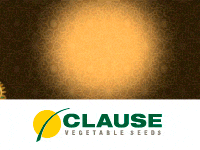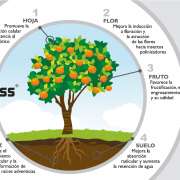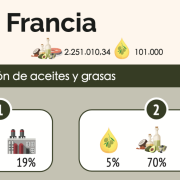Five reasons why Agro’s digitalization is unstoppable
By José Luis Molina Zamora, President of the Hispatec Group
1.- ICT technology solutions (software, devices, communications) are now available.
There is already a wide range of companies and solutions specifically focused on the Agro sector, which also have an adequate level of maturity
Naturally, farmers, technicians and companies should look for and choose companies that understand the Agro sector very well, that transmit greater strength and future guarantees, committed to providing good service and protecting investments in the technology sector, to the pair that bet to continue innovating and evolving the solutions that they propose.
2.- Generational change in the Agro sector.
This implies new ways of thinking, new tools (mobile, Internet, sensors, automatisms, artificial intelligence, etc.), methods, culture and greater willingness to change.
Young people who are attracted to agrarian activity, either by continuity of family exploitation or as new professionals in the field, do not want to do things in the same way as the previous generation.
Technology has evolved a lot, it allows things to be done differently at many levels, and those that are joining the sector are the banner of that change.
3.- Need to control processes and costs, as well as to improve economic efficiency.
The Agro sector has been improving productivity for decades significantly and operating with narrow margins. The key is to be able to produce a certain product and quality, with a unit cost as tight as possible to maintain or improve competitiveness.
This dynamic seems to be going on in the coming years. Process control, cost and efficiency improvement is not an option, it is essential in the sector.
The ICT solutions already help us to measure and improve all the operational processes of the agricultural activity, because everything that is measured and analyzed is easy to improve.
4.- Comprehensive control of the use of scarce resources and minimization of environmental impacts.
In parallel and similar to economic efficiency, ICT solutions help to measure and control precisely the use we make of scarce resources such as water, soil, energy, agrochemicals, etc.
All this results in lower environmental footprints and in a sustainable use of finite resources.
5.- More information to the consumer about the products and processes followed in their life cycle.
Consumers demand more and more transparency and more information about food. It must be complete and truthful information, corresponding to that specific food, and not standard information created for marketing or mere regulatory compliance purposes.
To achieve this objective, it is necessary to have a complete digital management of all the processes of production, transformation and distribution of food, that capture multiple evidences and show as complete information as possible to consumers, also in digital support.
This, in addition to improving consumer confidence, allows differentiating products, enhancing those attributes that make them unique or better than others.
Why today and not tomorrow?
The accumulation of data from all processes, both Pre-harvest and Post-harvest, is what allows their subsequent analysis, learning and improvement of organizations and individuals.
Advanced analytics and artificial intelligence solutions require large amounts of data, and training from them. It is about adopting a dynamic of continuous improvement, based on a greater wealth of digital data, which already generates significant returns in the short term, and even greater when the medium and long term are contemplated.
We must act with the logic of digitizing now and with the highest level of depth possible, because accumulating data from now on or intensifying its accumulation, it facilitates us to accelerate the learning process in the medium and long term, which is always based on a large volume of data.
Let’s not wait for others to invent, because there are already mature solutions with positive returns in the short term, and we also accelerate the adoption process towards a more analytical culture, in which better decisions are made from the analysis of a large amount of data .
















